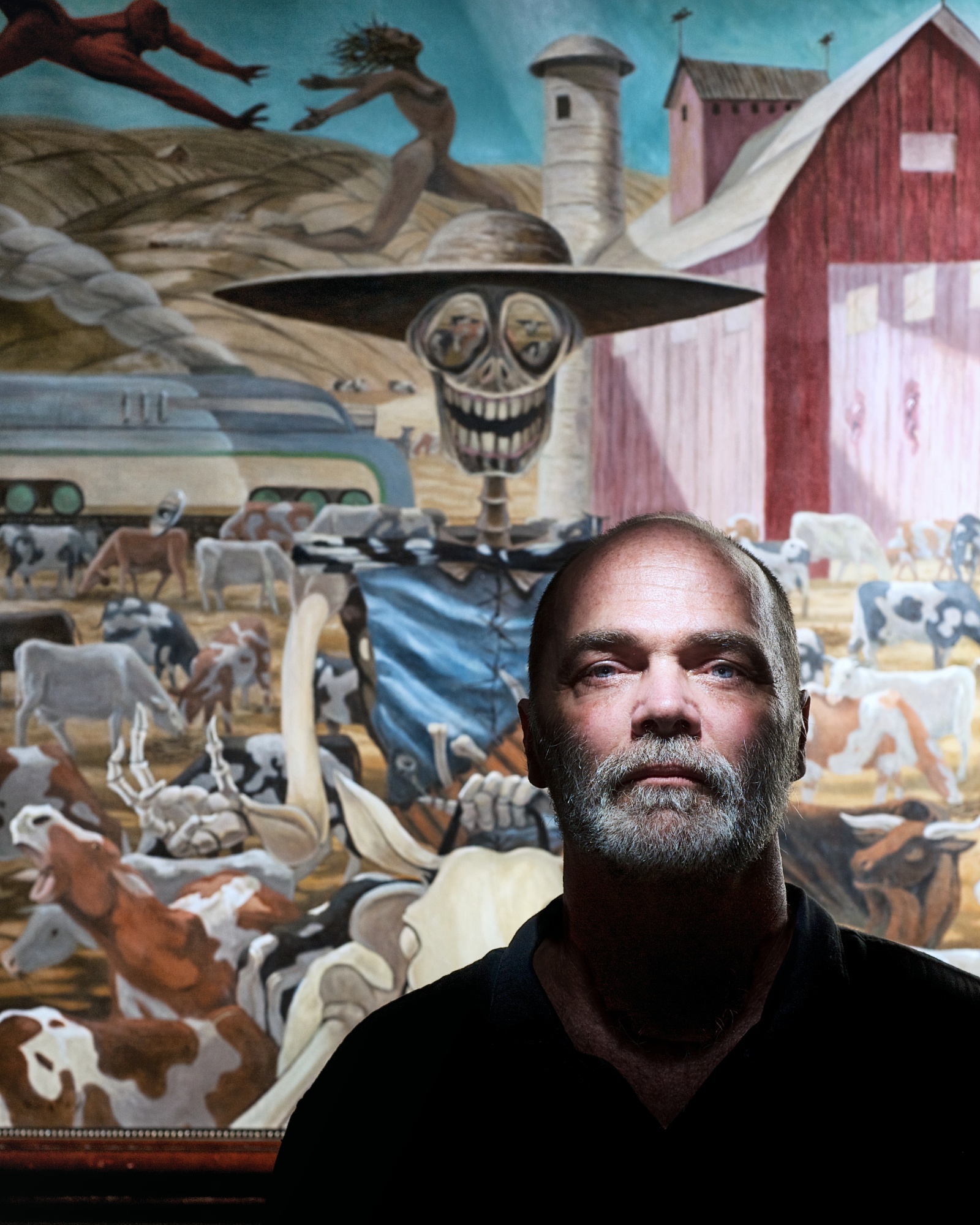By Ross Blanchard and Perry White
Photo: Richard Melloy. By Miri Stebivka
There are only a couple of paths to success for an artist to take and succeed in his passions. Richard Melloy has chosen that of Master Artist — a path that requires one to delve deeply within the intended subject and explore one’s media with the intention of having it inform the work. Melloy is more than an accomplished painter— he is an inspiration for creative longevity and finding a way to make art work for the artist; for being bullheaded enough not to quit and smart enough to adapt.
Melloy, 57, graduated from Central Washington University in Ellensburg, Washington with a bachelor’s degree in Fine Arts. Melloy settled in Portland in the 1980s and was part of the nascent art scene in Northwest Portland that would go on to spawn the Pearl District. Melloy spoke of the small galleries around NW 12th and Hoyt–his gallery was called Quartersaw–and shutting down the street with wild parties that would inevitably be broken up by the police. Now living in a neighborhood in Southeast Portland, Melloy is a very sought-after graphic designer and renowned painter.
Art historian Perry White and I sat down with Melloy shortly before his exhibit opened at Northwest IPA on Foster Road. We talked about Melloy’s influences, starting with his admiration for David Hockney and his pool paintings of life in Southern California in the 1950s. Melloy describes Hockney’s approach as seemingly naive in its simplicity but explains that a close look reveals a high level of sophistication.
“I like the idea of trying to get an understanding of how much information it actually takes to make something believable or acceptable,” Melloy explains, describing his appreciation of Hockney’s work. We discuss some of the simplicity in Rembrandt sketches as well, which demonstrate how one line can show weight or movement. Melloy explains how so very few marks can demonstrate the weight of a bucket being carried by a leaning milkmaid, her struggle made evident in the most efficient way by the artist.
“In some ways, I’m studying anatomy like I’ve never studied it before,” Melloy adds, referring to his current work.
Melloy embraces technological advancements as an artist as well. He bristles when he encounters young artists denying new technology that would help them with their art.
“The computer has made me much more in tune with composition,” he says. “If Da Vinci was alive, you don’t think he would be using a computer? Jesus Christ. Of course he would.” He goes on to tell of repainting a single figure five times before turning to his computer to help him hit his points.
Melloy’s style is developed and distinct, but he flows through the variations of paint use, waxing from Flemish styles and Hieronymus Bosch-like composition, to the wildly colorful and mark-oriented works of Francis Bacon.
In conceptual schools of painting, one is held accountable for every mark. Melloy’s work includes the happy accidents as well, he admits, and the choices he makes to incorporate these into the work, so, when finished, they disappear into the painting as if intended by the painter.
His knowledge of and participation in the conversation of modern art and iconography via world history is never more obviously influential in the inner mathematics of his work than in the sister paintings Toilet and Magic.
Toilet depicts Melloy’s inner court of self-opinion. The audience is seated in judgment over a dimly lit nightclub, watching oversized Punch and Judy dolls. The audience consists of recognizable historical artistic references from Magritte to Picasso paintings hanging behind the bar. Da Vinci’s Last Supper is quietly depicted as skeletons sitting in the balconies. There are personal references to his friends and loved ones as well.
Magic is painted through a haze depicting icons of history— some fictional and ancient, both religious and cultural, others referencing personal events, the meaning of which only Melloy knows. Figures march toward the center of a mount with dark-hooded servants holding a carnival banner between them as an ascension takes place.



Richard Melloy's "The Way I See It" Opens at NWIPA Saturday | PDX MagazinePDX Magazine
[…] is a veteran artist and an inspiration for creative longevity. PDX Magazine wrote of Melloy in Issue No. 1: “[He’s] bullheaded enough not to quit and smart enough to adapt throughout a long […]
Ford Gallery Launch with “Richard Melloy: Thirty Years and Painting” | Ford Gallery, Portland
[…] See the full article HERE. […]
Richard Melloy, “Present In Time” | Ford Gallery, Portland
[…] See the full article HERE. […]